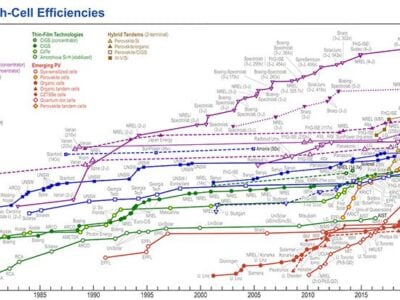
Extensible DSP for autonomous driving
As the industry progresses through the six levels of driving automation, each step requires increased processing capabilities inside the car. Right now, intelligence in the IoT is moving closer to the network edge; we can expect the same to happen in the automotive industry. The sensors needed to enable ADAS and autonomy require higher resolution and need to process more data, more quickly and with less latency. The only way this can be done, really, is to put more processing capability as close to the sensor as possible, within the future zonal architectures of cars.
If vehicles are to become more autonomous, they need to understand the surrounding environment. Sensors provide that capability. The three key sensor modalities are radar, lidar and vision. Each has its relative strengths and weaknesses, which means all three will need to operate together. Combining multiple different sensor technologies in a sensor fusion system provides true redundancy for functional safety and improves sensing accuracy. The fourth element that will enable each element in the system to interoperate is connectivity. Together, these four elements provide the foundation for the era of autonomous vehicles.
Meeting the need for ASIL-certified IP
Autonomous vehicles feature multiple sensors that conform to one of three main types. Radar is expected to feature strongly, with 20 or more individual sensors distributed around a vehicle. As the technology best suited to providing high-resolution ranging data, lidar sensors will play a key role in autonomous driving. As the most mature technology, at least in terms of its use in automotive applications, image sensors will proliferate in autonomous vehicles. All three will be used in multiple ways, such as monitoring the terrain, other road users, pedestrians and weather conditions, as well as absolute and relative speeds. Sensors will also be used to monitor the vehicle’s interior, for occupant detection and observation.
Next: DSP data challenge
One challenge is the amount of raw data generated by the sensors. It would be unfeasible to move that much data around a vehicle’s in-car network or relay it all to a cloud service for processing. The latency and bandwidth requirements would render autonomy impractical, which is why the raw data needs to be processed locally.
Another challenge relates to making the sensor solutions adaptable as the sensing imperative changes. For example, the range over which the sensor operates is speed dependent. Radar and lidar offer complementary capabilities in relation to resolution, but this, too, may be dependent on weather, light levels and scene contrast.
However, this highlights other challenges. The engineering need for high-performance processing solutions is clear, but on a commercial level those solutions can only be used if they are certified for use in an automotive application. They must also meet the processing requirements in an optimized way. The cost of lidar currently far exceeds the cost of either radar or image sensing, but the automotive industry accepts that lidar is necessary, due to its unique ability to meet specific sensing requirements.
This indicates a need for a scalable processing platform that can be applied to sensors of all types, optimized for the different applications. The operation of automatic emergency braking is quite different from adaptive cruise control, but both may use a combination of lidar and radar sensors. Similarly, blind spot detection may use an image sensor during the day, but radar at night or in bad weather conditions.
Each of the many use-cases needed to enable full autonomy requires a solution optimized for that purpose. But with many tens of individual sensors required, OEMs need a way of commoditizing what are effectively individual requirements. The answer is to standardize on a common but scalable processing platform, namely the zonal architecture including zonal controllers. These zonal controllers must be configurable to provide the right level of high-speed signal processing and the required safety level for various applications.
Functional Safety
The Cadence Tensilica ConnX B10 and B20 DSPs are optimized for next-generation sensing applications, including radar and lidar, as well as high-performance V2X (vehicle-to-everything) communications. They are also the semiconductor industry’s first dedicated radar, lidar and V2X DSPs available as licensable IP to achieve Automotive Safety Integrity Level B random hardware fault and ASIL D systematic fault compliance. This level of functional safety certification to ISO 26262:2018 is essential for OEMs and Tier 1 suppliers developing SoCs targeting ADAS solutions and autonomous driving applications.
The ConnX B10 and B20 DSPs’ instruction set architecture (ISA) supports accelerators designed specifically for radar, lidar and V2X. This helps engineers optimize their SoC design for the specific application, while benefiting from the common architecture to support code migration, reusability and portability.

The ConnX DSPs (above) employ SIMD (single instruction, multiple data) vector processing based on a VLIW (very long instruction word) architecture. This supports parallel operations for load/store, MAC and ALU. The ISA is optimized for linear algebra and complex data, as well as vector compression and expansion. The ISA helps enhance performance in various stages of sensor processing, such as Kalman filter, MUSIC and DML processing.
Featuring the fastest clock speeds in the ConnX series, the ConnX B10 and B20 DSPs also offer an optional 32-bit vector fixed-point MAC that can be used to accelerate the processing functions associated with radar/lidar/V2X, including FIR, FFT, convolution and correlation. Vector double, single and half-precision floating point operations can also be hardware-accelerated.
The ConnX B10 and B20 DSPs have been optimized to provide the performance needed by advanced MIMO systems, including vector-based filtering, FFT and linear algebra processing. The low-level processing requirements that these systems impose are also acknowledged, with an instruction set that supports a comprehensive level of bit-oriented operations.
The instruction set also includes optimized instructions for working on 16-bit data to perform complex arithmetic, polynomial evaluation, matrix multiplication and square root/reciprocal acceleration. In addition, the ISA also supports 16- and 32-bit peak search acceleration.
With an increasing number of antennas needed for higher-resolution 4D imaging radar, and as physical layers (PHYs) transition to more advanced standards such as 5G, the processing performance requirement increases dramatically. The ConnX series meets this demand with its highly parallel and scalable architecture. The ConnX B10 and B20 DSPs also provide multi-core solutions to scale processing capacity beyond a single core.
Although DSPs are associated with parallel execution of complex algorithms, the need for hardware control is not overlooked in the ConnX series. The ConnX DSPs also excel at running control code in areas such as the PHY application layer control. When interfacing with hardware blocks is required, ConnX DSPs may interface with the external hardware through dedicated custom interfaces, which deliver virtually unlimited data bandwidth.
To further optimize the DSP IP, the ConnX series can also be customized using the TIE (Tensilica Instruction Extension) language. Similar to Verilog, this language can be used to design multi-cycle pipelined execution units, register files, SIMD ALUs and more, all of which can be used to extend the core architecture. Each extension has its own dedicated instructions that become part of the ISA, allowing software developers to access hardware extensions with ease.
Conclusion
DSP architectures must deliver high performance with efficient memory utilization, while minimizing energy and cost. The ConnX B10 and B20 DSPs have been designed specifically for radar, lidar and 5G, delivering 10 times more performance than their other software-compatible ConnX family members. Features such as 32-bit fixed point MACs, double-precision, single-precision and half-precision floating-point, more parallelism and a faster clock speed all come together in an extensible architecture. This architecture is specifically designed to address processing requirements throughout the radar/lidar sensor and V2X application compute chain, as well as meet the needs of automotive OEMs targeting Level 2 and above driving automation.
Extensible DSP IP optimized for radar, lidar and V2X to receive ASIL B random fault and ASIL D systematic fault compliance certification helps to define this future for greater levels of autonomy.
Ted Chua is product management and marketing director, Tensilica radar, lidar and communications DSPs at Cadence
Related articles
- CADENCE STREAMLINES IP FOR VISION, AI APPLICATIONS
- CADENCE CLAIMS 10X BOOST FOR AUTOMOTIVE RADAR/LIDAR, 30X BOOST FOR 5G
 If you enjoyed this article, you will like the following ones: don't miss them by subscribing to :
eeNews on Google News
If you enjoyed this article, you will like the following ones: don't miss them by subscribing to :
eeNews on Google News



